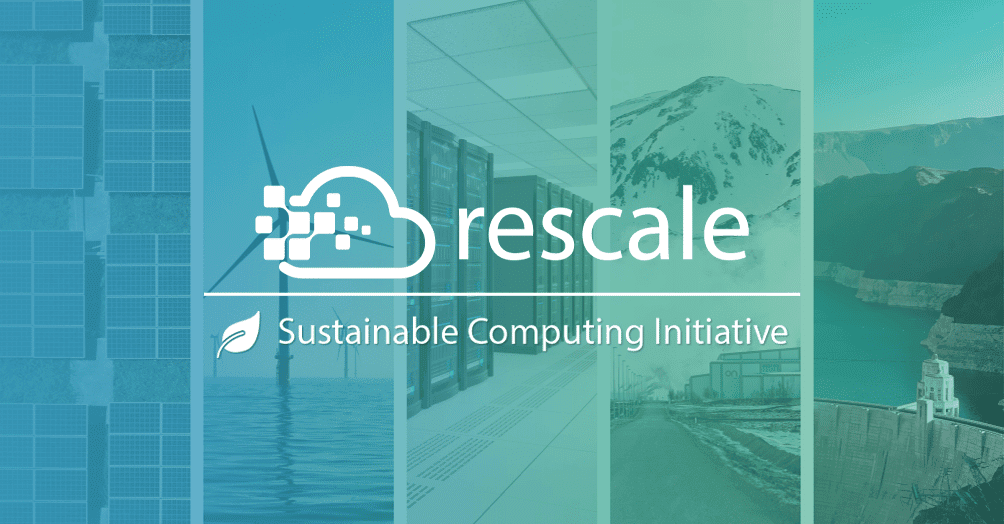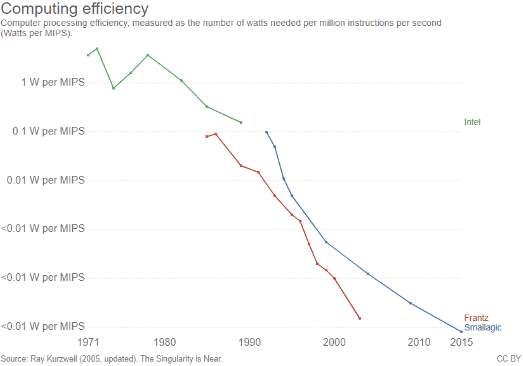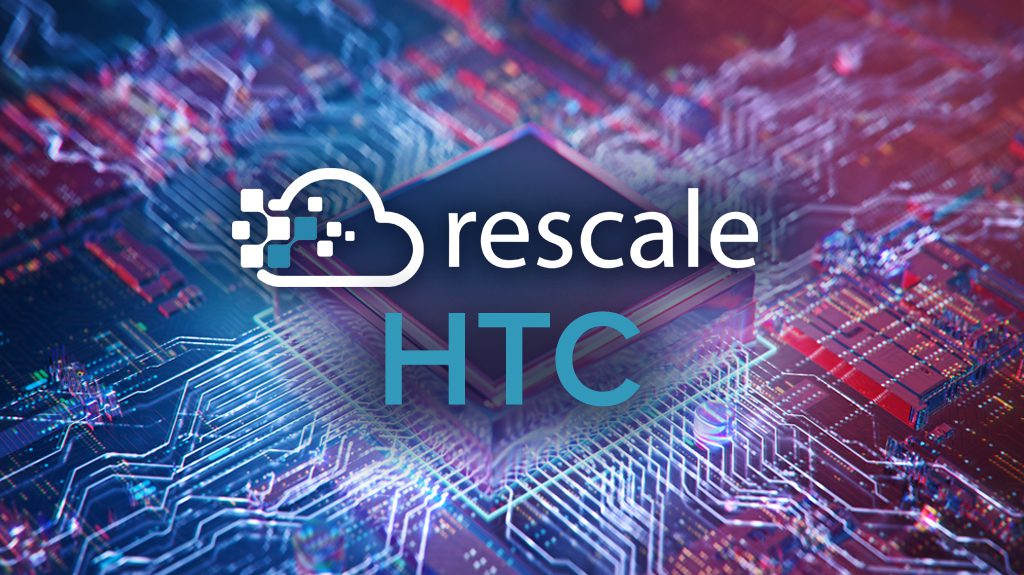Four Strategies Towards Sustainable Computing
Rescale has a unique vantage point on sustainability, given we serve some of the largest engineering-driven companies in the world with High Performance Computing (HPC). Our customers are creating everything from new electric personal aerial transport to commercial nuclear fusion power reactors. We are proud to be powering an engineering renaissance that is creating a more sustainable world.
Computing is enabling a more sustainable future, but we can do more: computing itself should be more sustainable. And now is the time. Data centers have a carbon footprint comparable to commercial aviation, responsible for 2% of greenhouse gas emissions worldwide, and is expected to exceed 3% by 2025.
Computing’s growing carbon footprint should not be surprising: in nearly every industry, computing helps us design better products, and make new discoveries. A recent study in Australia found that their astronomers’ carbon footprint for computing exceeded all other activities combined, including air travel, offices, and use of observatory facilities.
There are four fundamental levers we can apply to lower the carbon footprint of computing even as we use it to solve our civilization’s biggest challenges.
- Improve hardware utilization through cloud computing
- Optimize workload configurations to use compute cycles efficiently
- Lower power consumption per unit of compute with modern hardware architectures
- Power computing with sustainable energy sources
Rescale Sustainable Computing Initiative
At Rescale, we are very excited to share our new sustainable computing infrastructure service with our launch partner Responsible Compute (more on this below). This news marks the latest in our comprehensive strategy to support making computing more sustainable. We call it our Sustainable Computing Initiative and consists of the following four pillars.
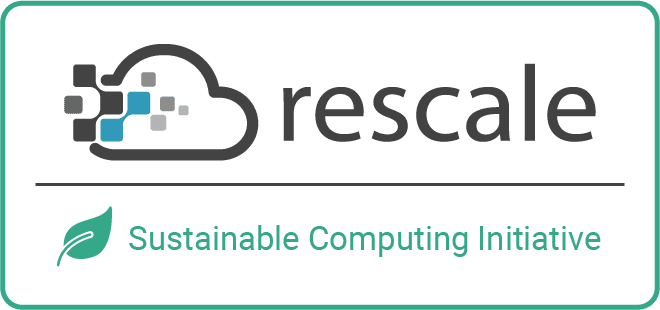
1. Improve Hardware Utilization Through Cloud Computing
Data centers typically have low utilization because computing demand is inherently volatile and built for peak utilization. According to research published on Sigmond Record, data center utilization typically runs around 40%. Virtualization has helped with workload consolidation, but an organization’s overall computing demand variability creates a practical upper limit on utilization rates. This is where cloud computing can play a critical role.
While cloud makes up the majority of today’s web services related workloads (e.g., e-commerce, social media), in the area of computational engineering and science (e.g., computational chemistry, computational fluid dynamics), cloud has only recently become mainstream. However we should not let the goal of high utilization create bottlenecks to science and engineering innovation. Through implementing an intelligent control plane such as Rescale, customers can achieve the dual purpose of maximizing use of existing data centers while securely utilizing shared cloud resources on-demand at 100% utilization for bursting, peak usage, or volatile computing patterns.
2. Optimize Performance of Computing Workloads
In the world of computational engineering, finding the right architecture and workload configuration can have a tremendous impact on computational efficiency, time-to-solve, and also power consumed. For example, Simulation and Machine Learning workload requirements can vary greatly in terms of processor performance, memory bandwidth, and interconnect latency. To help customers get the most from each core-hour used, Rescale’s platform recommendation system understands user workload requirements, cloud provider robustness and scalability, hardware manufacturer specifications and ISV algorithmic computational profiles to find optimal workload configurations across the computing stack. Additionally, our team runs extensive benchmarks that are used to create both the Rescale Performance Intelligence and Rescale Maturity Intelligence that serve as the foundation of Rescale’s Intelligent Computing Framework and recommendation engine.
3. Lower Power Consumption Per unit of Compute With Latest Compute Hardware Architectures
Watts required per MIPS (millions of instructions per second) steadily decrease each year with each new generation of processors. The challenge becomes how to switch workloads to these new architectures seamlessly and cost effectively. Rescale’s HPC practice routinely works with our customers to keep them informed of the latest emerging trends and architectures, together with implications for overall performance and cost. The Rescale platform has also been enhanced with full stack economics optimization features, so organizations can understand not only the software and hardware costs of each architecture decision, but also what that means in terms of time-to-solve and the total number of core hours consumed.
4. Power Computing With Sustainable Energy
With each of the levers above applied, the next logical step is to power computing with sustainable energy to lower the global carbon footprint. The decisions organizations make around sustainability are never in isolation, so our goal is to 1) provide easy access to sustainable compute resources, and 2) provide the information to allow IT decision makers to balance each of the factors that matter, including cost, time-to-solve, risk, and of course, sustainability. Our vision here is to develop Rescale’s Sustainability Intelligence as an additional metric in the Intelligent Computing Framework that can be used in our compute recommendation engine, and allow IT decision makers to create policies balancing their objectives.
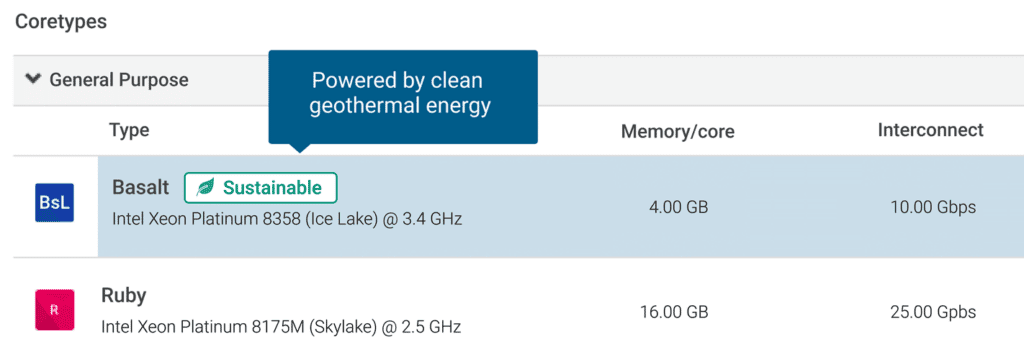
The “Basalt” core type we are introducing today in Rescale’s infrastructure service catalog is based on Intel’s ‘Ice Lake’ architecture, for heavy compute intensive operations. Made possible by our partners at Responsible Compute, this infrastructure sits in Iceland, is cooled by the local Arctic Circle climate, and is powered by clean hydroelectric power.
Sustainable Computing Takes All of Us to Make an Impact
Companies have started to develop integrated approaches towards their environmental and social impact strategies, with 20% of Forbes 2000 companies having net-zero commitments. These companies are working to establish transparency on how they are reaching their goals across the value chain, including scope 3 to understand the full greenhouse gas emissions of their operations.
Rescale is committed to providing access to sustainable computing resources, and providing transparency so organizations understand the impact of their decisions. Solving the greatest science and engineering challenges of our time requires tremendous computing power, but by applying each of the levers above around utilization, workloads, architectures, and energy, organizations can confidently accelerate innovation while balancing sustainability objectives.
We would like to encourage all of us in the HPC community to drive the change towards sustainable computing. And at Rescale we are ready to help. Rescale is leading the charge for sustainable computing with the experience, knowledge, and position to help organizations apply each of these levers towards sustainability, working closely with our cloud provider, hardware provider, and software partners. This is a journey that never ends, but we’re proud of the progress we’ve made so far, and are excited by the road ahead.

